Programs focus on pet nutrition and health
Pawsitive results
By Beth Bohn
This video shows how K-State’s pet food program offers research expertise and facilities to explore solutions for pet nutritional challenges and pet food processing.
Seek more
Learn more about the Hill’s Pet Health and Nutrition Center and the pet food program.
If we are what we eat, the same holds true for our pets, particularly dogs and cats, according to experts and researchers with Kansas State University’s pet food program and Hill’s Pet Health and Nutrition Center. They say good nutrition is important for healthy pets.
K-State’s pet food program, a part of the feed science program in the College of Agriculture’s grain science and industry department, is the only program in the U.S. focused on food for dogs and cats. The program offers research expertise and facilities to explore solutions for pet nutritional challenges and pet food processing.
The Hill’s Pet Health and Nutrition Center is the primary care service at the Veterinary Health Center, a part of K-State’s College of Veterinary Medicine. The center provides annual wellness exams; preventive care such as vaccinations and parasite prevention; acute and chronic illness management; minor surgical procedures; and nutritional assessment.
Feeding the Kansas economy
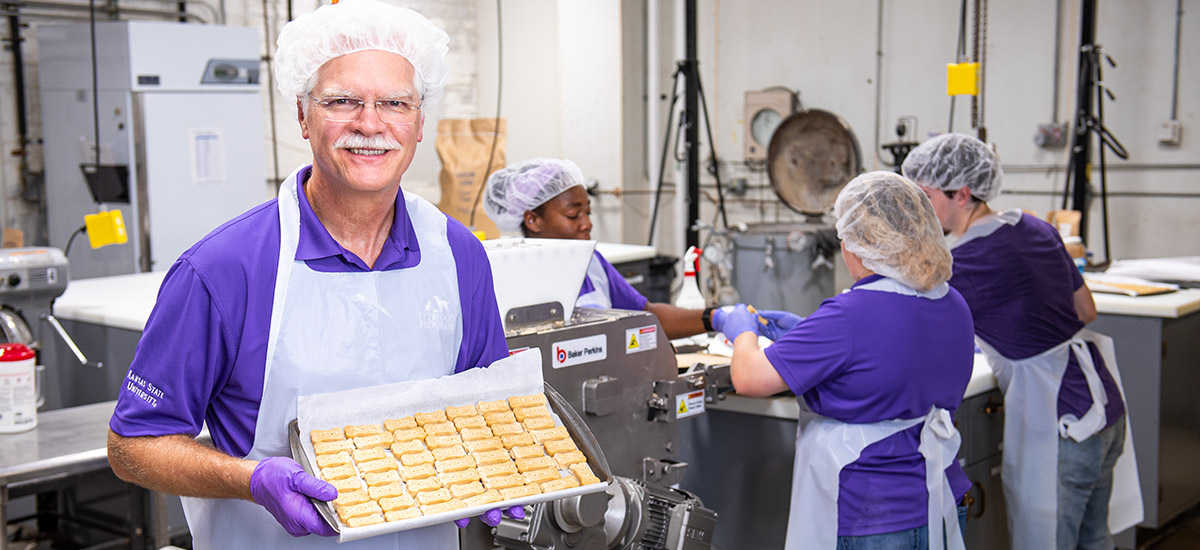
Greg Aldrich researches ways to make dog and cat food more nutritious.
Pet food is big business. Pet food sales topped $100 billion globally in 2021, with the U.S. share of sales at $42 billion, according to Greg Aldrich, K-State associate professor of grain science and industry and pet food program director.
“K-State created the pet food program as a strategic opportunity for the university to capitalize on the pet food industry in Kansas and Missouri, which are both home to major pet food manufacturing facilities,” Aldrich said.
The diverse program utilizes the university’s expertise in extrusion, thermal processing, canning, baking, sensory analysis, value-added processes and more. Along with offering a bachelor’s degree in feed science management with a pet food emphasis, the program offers master’s and doctoral degree options. Members of the pet food industry, including ingredient companies, manufacturers, grain checkoff programs and related entities, are major supporters of the program’s research.
“Much of the work we do is evaluating the various ingredients in a pet food application,” Aldrich said. “How a pet food is processed can influence its nutritional value and we look at how different processes and food forms might be adapted to provide better food for your dog and cat.”
Beyond kibble and canned food
The Food and Drug Administration regulates pet food in the U.S. along with the Association of American Feed Control Officials, a voluntary organization that sets the nutritional guidelines commercial pet foods should meet for animals. Association members are state and federal regulatory officials who oversee ingredient definitions, nutritional standards, label compliance, field operations for inspection staff and program administration.
Commercial pet food options available today are many and range from food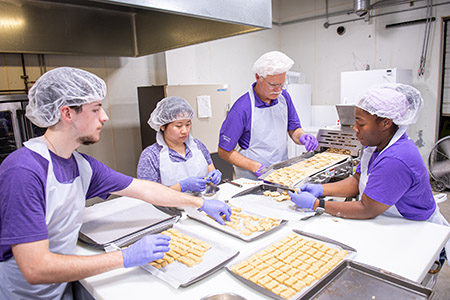 made especially for each life stage of a pet to many of the current human diet trends such as whole foods, low fat and high protein.
made especially for each life stage of a pet to many of the current human diet trends such as whole foods, low fat and high protein.
“In just the last five to 10 years alone, we’ve gone beyond kibble and canned food,” Aldrich said. “Now we’re seeing the introduction of refrigerated, fresh, frozen, dehydrated and even home-delivered pet food products.”
Each new form of pet food presents processing and nutritional challenges. Research from Aldrich and his team focuses on the effects of ingredients and processing on pet food’s nutrition, shelf life and safety.
One current study deals with frozen pet food, which does not go through the thermal processing needed to kill bacteria, including salmonella, E. coli and listeria. These pathogens can sicken pets and the pet owners who handle the food. The Aldrich lab is conducting food micro studies and processing evaluations on GRAS — or generally recognized as safe — food additives that could mitigate pathogenic bacteria in frozen or raw pet food.
Sustainability is a major trend in the pet food industry and an area of emphasis for Aldrich and his graduate students. They are working on several projects using co-products in pet food. Co-products are incidentally produced in the production of another product. Using co-products is a way to utilize all parts of a grain plant or livestock animal, eliminate waste and add value to agricultural commodities.
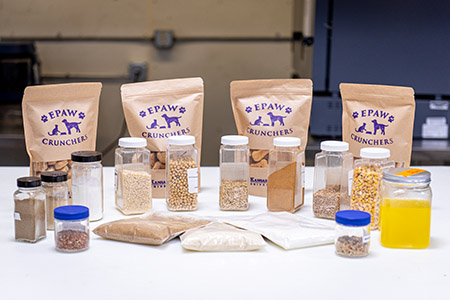 Aldrich’s team is studying if corn-fermented protein from distillers grains, a co-product of the ethanol production process, could be used as an alternative, vegetable-based protein source in pet food. The study includes how the yeast in the fermented protein may enhance palatability and gut health. The team also is looking at ways to concentrate the insoluble fiber of corn — its high-cellulose seed hull — in pet food.
Aldrich’s team is studying if corn-fermented protein from distillers grains, a co-product of the ethanol production process, could be used as an alternative, vegetable-based protein source in pet food. The study includes how the yeast in the fermented protein may enhance palatability and gut health. The team also is looking at ways to concentrate the insoluble fiber of corn — its high-cellulose seed hull — in pet food.
Sorghum, which is high in antioxidant polyphenols, is another grain Aldrich’s lab is studying for use in pet food, including the co-product of sorghum-based dried distillers grains. The researchers also are evaluating whole soybeans in extruded pet food to increase protein and fat content.
Nutrition and pet health
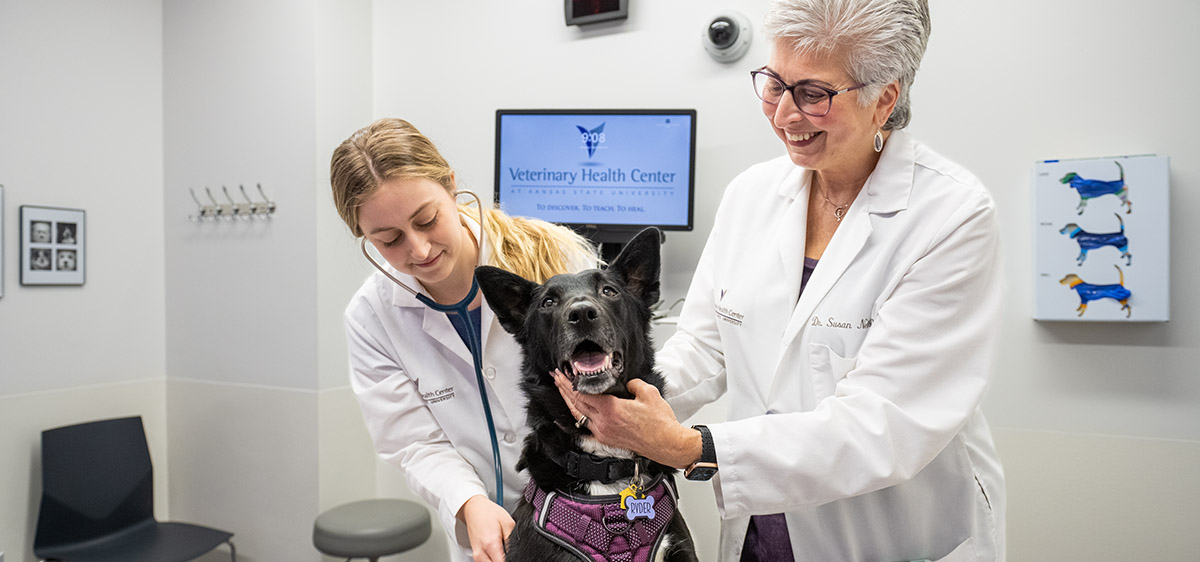
Fourth-year veterinary student Morgan Hull examines Ryder the dog with Nelson.
While the pet food program ensures pet food is safe and nutritious, veterinarians at the Hill’s Pet Health and Nutrition Center often treat dogs and cats for problems caused by poor nutrition. The clinic staff includes faculty and veterinary students from the College of Veterinary Medicine.
“We take nutrition and its importance to the health of our patients seriously,” said Susan Nelson, veterinarian and professor of clinical sciences. “We perform a nutritional assessment each time we see our patients to determine if adjustments in their diets are needed.”
Conducting nutritional assessments is important training for veterinary students, helping them become more confident and competent in the discussions they will have with their future clients about the nutritional health of their pets, Nelson said.
Center staff often recommend adjustments in a pet’s diet for weight control. According to the American Animal Hospital Association, more than half of the cats and dogs in the U.S. are overweight or obese. Obesity in dogs and cats can lead to a shortened life span; diminished quality of life; chronic inflammation; skin, orthopedic and metabolic disorders; some cancers; and other life-threatening conditions.
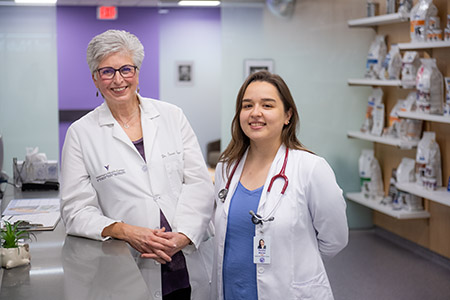 To help dogs and cats that are obese but otherwise healthy, the center offers the Healthy Weight Clinic, a six-month program that provides an individual weight loss diet for each pet client and recommends increased activity.
To help dogs and cats that are obese but otherwise healthy, the center offers the Healthy Weight Clinic, a six-month program that provides an individual weight loss diet for each pet client and recommends increased activity.
“Data accumulated by this program shows that animals can lose weight, just like people, if they consume fewer calories and expend more energy,” Nelson said.
The center also is involved in clinical studies regarding pet nutrition. A current study is evaluating the palatability of a newly developed dog food to meet the nutritional needs of dogs with cancer.
“This is a pilot study assessing how well dogs eat the food and if it helps them maintain their weight while undergoing various cancer treatments,” said Mary Lynn Higginbotham, associate professor of veterinary oncology. “Weight loss is common during cancer treatment, and maintaining weight and meeting nutritional requirements are important for the pet’s overall health.”
Nelson and colleagues at the center often refer pet clients to clinical trials conducted at the College of Veterinary Medicine. Recent trials have included treatments for osteosarcoma, acute kidney injury and osteoarthritis in dogs, and chronic kidney disease and inflammatory bowel disease in cats.
Sidebar
A pet project: KibbleCon
One way Kansas State University’s pet food program networks with the pet food industry is through an event called KibbleCon.
The conference, coordinated jointly by the university pet food program and K-State Innovation Partners, with sponsorship by various entities from the pet food industry, is an opportunity to showcase the latest pet food research at K-State and hear from national and international experts in the field.
The 2022 KibbleCon focused on the latest research and current industry topics, such as pet food startups and entrepreneurship, marketing, commodity markets and supply chain trends, food safety, packaging and more.
KibbleCon also is an opportunity for K-State students to present their research and network with representatives from the pet food industry. Greg Aldrich, pet food program director, said job placement in the industry is high, with students in the program typically landing jobs three to six months before graduating.